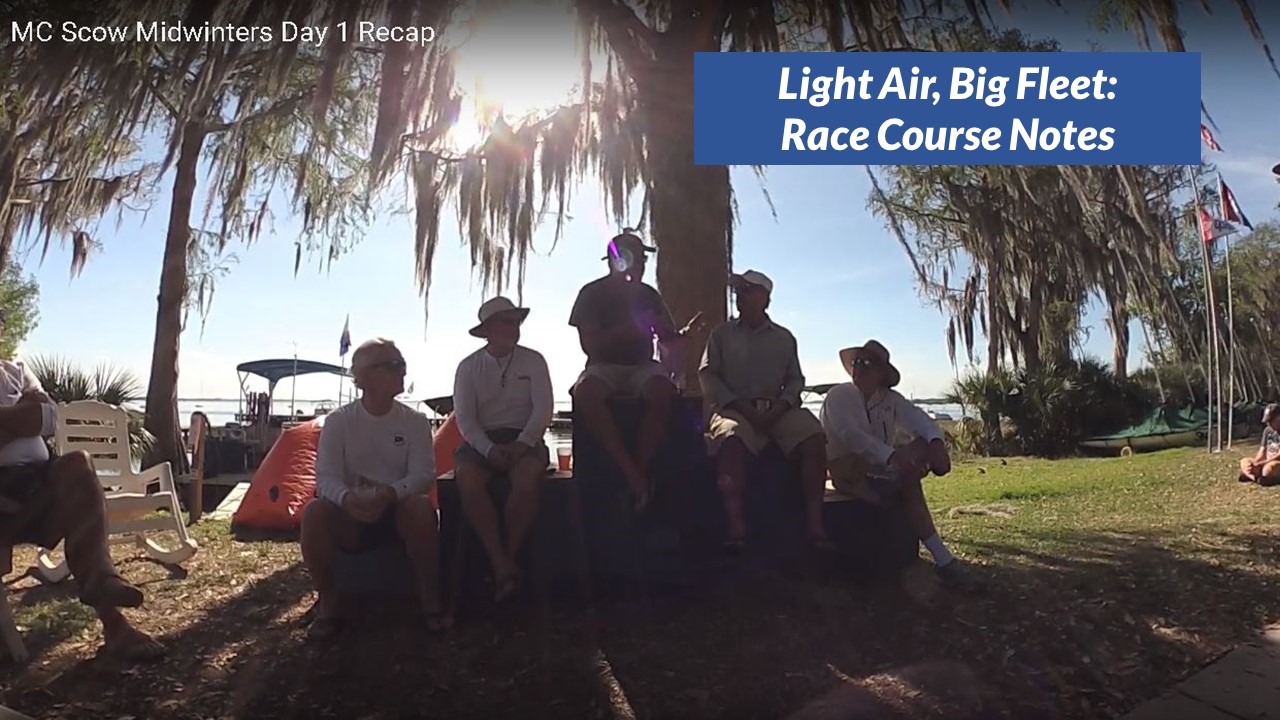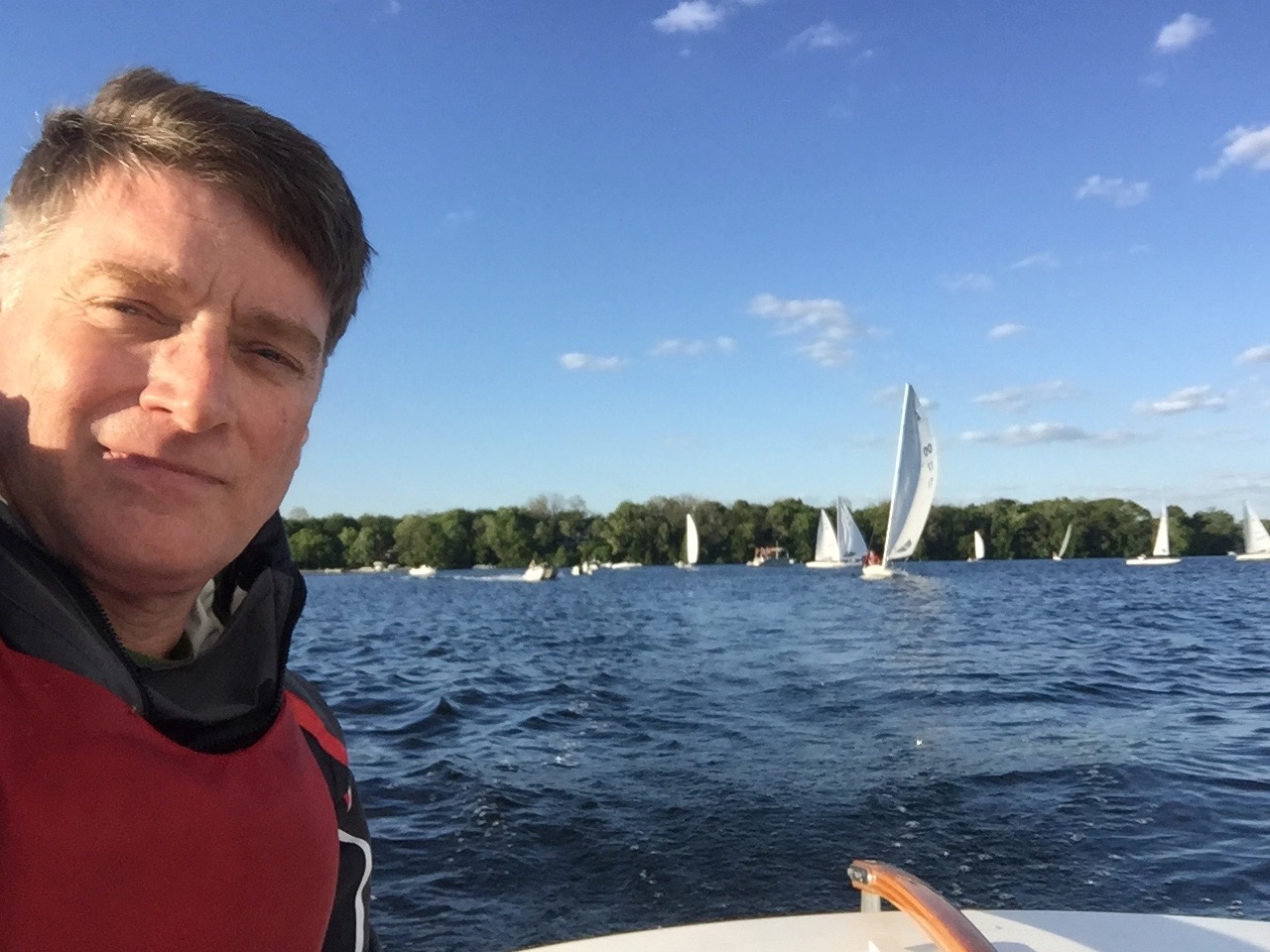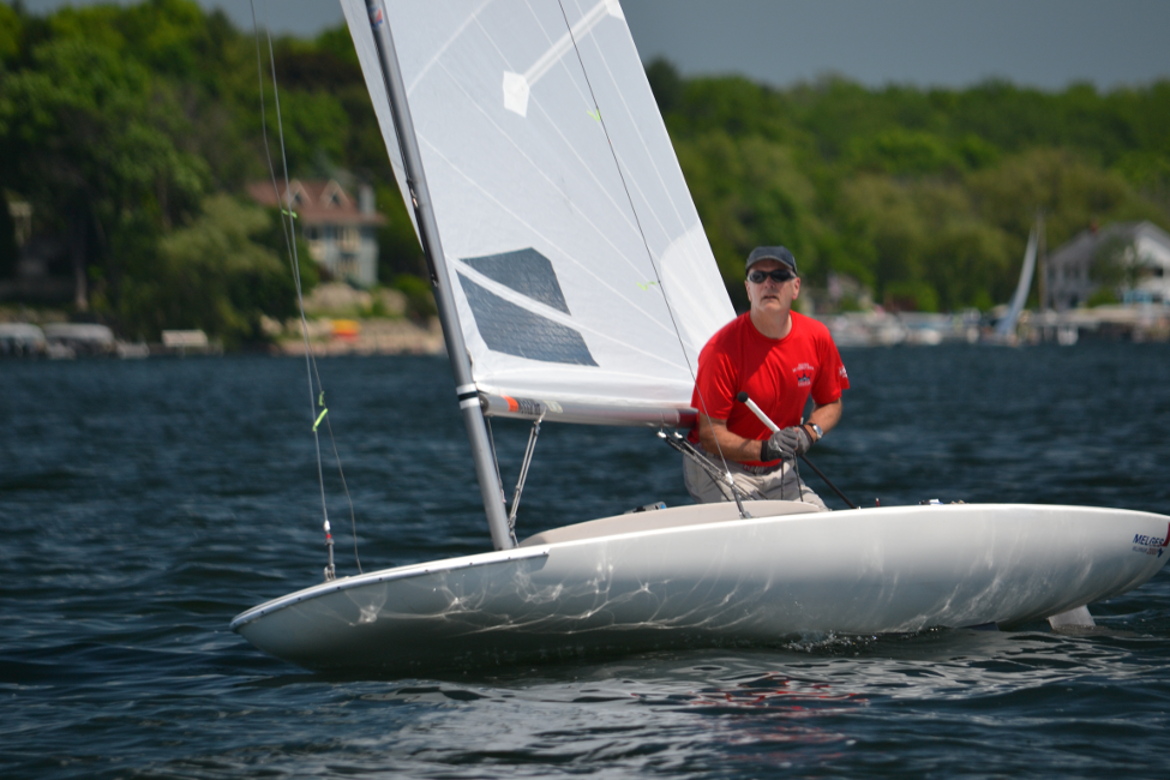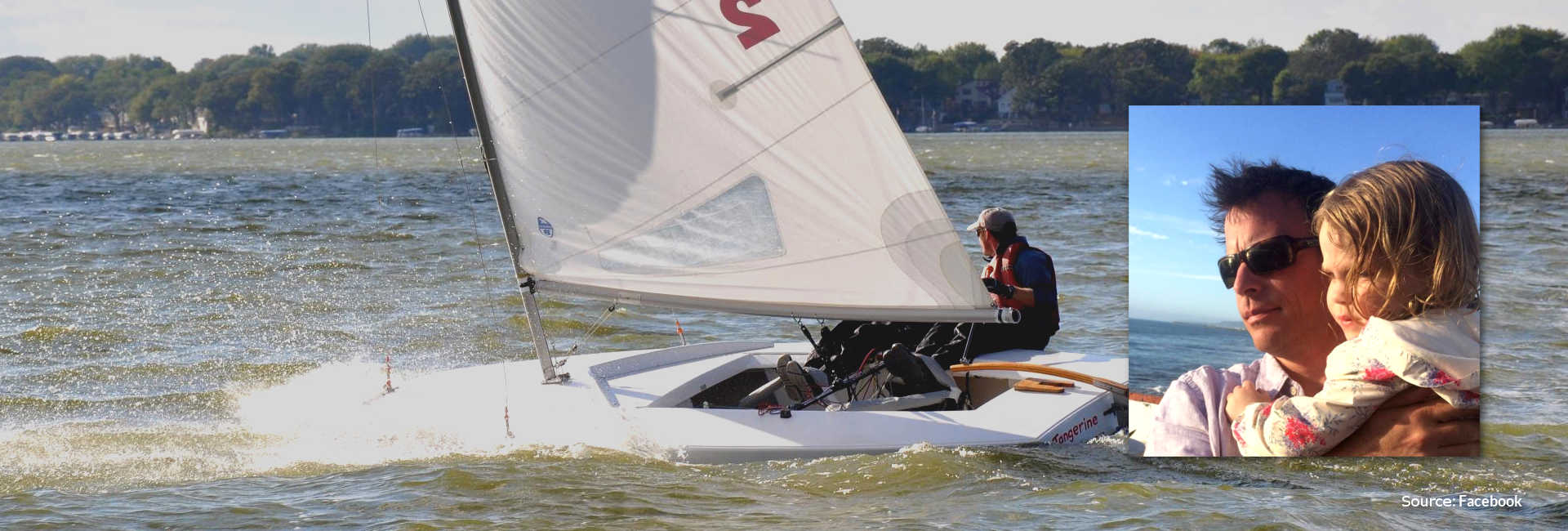Race 1 of the 2020 MC Midwinters at Lake Eustis Sailing Club was sailed with 60 boats in very light air (2-5 mph). The RC made the course very short (0.2 miles) in order to stay within the only part of the lake where there was at least some breeze showing on the water. Needless to say, the conditions were challenging and not ideal for championship racing. However, the post-race debrief highlighted many good tidbits.
Race leaders were Bill Draheim (1st), Joe Schaub (2nd), Mark Beaton (3rd), Vince Driessen (4th), Scott Harestad (5th) and Lee Sayler (6th). Scott was not present for the debrief.
Here’s the video from the post-race debrief, thanks to Sean Bradley of MC Fleet 105.
Key Points
Sniffing Out the Favored Side (2:00 – 4:30)
The left side of the course turned out to be favored. The sailors speaking at the debrief all went left, and three insights from this discussion on how they decided are important:
- Less traffic in light air. Mark started left because it was less crowded, which is a huge advantage in light air. See our post on Clear Air for more.
- Wind direction. Joe thought the wind was slightly stronger on the left and that the direction was frequently left relative to the course.
- Watch, wait, and see approach. Bill shared that he spends less time sailing and more time watching before the start. In this case he was not sure which side to choose, because although the wind on the left seemed a little stronger, the ripples on the water did not extend as far up the course as they did on the right. So, he opted to start in the middle and see which side appeared to be paying off. After the start, a few boats on the left appeared to be ahead, so he continued left. See our post on Favored Side of the Course for more about choosing a side.
Wind Not Visible on the Water (4:30 and 15:00)
There were no ripples on the water in an area upwind and to the left of the pin end of the line. However, some sailors had tried sailing in that area before the race and found enough wind and a better angle. On the other hand, several sailors avoided the area because of lack of ripples. In very light air, wind shear is present and there can be more wind above the surface than at the surface. David Moring pointed out that this is common in February on Lake Eustis. See our post on Wind Shear and Gradient Effects for more.
1st Downwind Leg – Stay to the Upwind Favored Side? (6:00 – 7:30)
Most of the top five sailed the downwind leg on the right side (looking downwind), which had been the favored side (left) on the beat. However, Bill saw boats behind rounding the windward mark and sailing into better wind velocity toward the middle. He jibed away from the right about half way down the run and passed Joe by the time they reached the gate.
2nd Beat – Choose the Previous Favored Side or Avoid Going Through the Fleet? (7:30 – 10:00)
The two race leaders (Bill and Joe) split at the leeward gate. Bill went to the left gate and up the right side of the course, reasoning that he would have to sail through part of the oncoming fleet to go left. Joe went to the right gate and up the left side, reasoning that the left had been favored and he didn’t see any reason to do something different. The left side paid off again and Joe recaptured the lead.
Light Air Sail Trim (10:00 – 13:25)
Bill pointed out the need to hike hard to leeward in very light air, while paying attention to angle of attack and making sure you don’t close the leech. It’s hard to see the telltales and the leech when hiking to leeward. Bill periodically stopped hiking and looked at the windward side to check the shroud telltales and the upper leech (2/3 up). You can use a forestay telltale for angle of attack. If you hike out far enough and are tall, you may be able to see the leech position from the leeward side of the sail.
Bill also pointed out that leech position is a better indicator of proper mainsheet tension than the position of the boom. You’re really trying to keep the leech open, so you should focus on that.
Joe pointed out that he was adjusting the mainsheet constantly.
See our posts on Angle of Attack and Light Air Boat Speed for more on sail trim.
Last Beat – Left Again (13:25 – 16:00)
Bill mentioned that it was pretty easy to decide to go left on the last beat, given all the data from the previous two beats. He used an opportunity to get left of Vince and Mark and sealed his position by doing so.
Sit in Middle of Boat or Hike to Leeward in Light Air? (16:00 – 18:45)
Eddie Cox of Melges pointed out that Bill tends to stay in the middle of the boat longer as the wind decreases. Many other sailors hike to leeward earlier. Bill pointed out that is is very hard to keep proper trim (angle of attack and leech tension) when you can’t see the windward side of the sail, so he stays in the middle until the wind is really light and he has to hike to leeward.
There was a short discussion about how much heel you need. Scott Slocum pointed out that over-heeling the boat seems to decrease the power.
Outhaul (18:45)
Bill and Joe pointed out that they had the outhaul loose. The common guidance is to tighten the outhaul in very light air (0-2 mph), loosen it in light-medium air until you’re overpowered, and then tighten it again.
Types of Sails Used (19:30)
The top six sailors all used different sails. This drives home the point that you can be successful with any sail if you learn how to use it and go the right direction.





